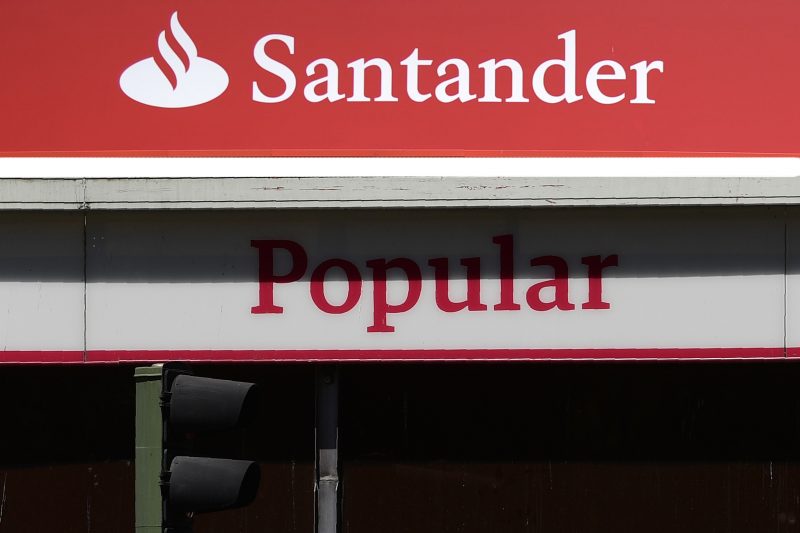Santander profit drops in difficult Europe
Banco Santander said its struggles in Europe had contributed to a 10 percent fall in net profit during the first quarter (CURTO DE LA TORRE, Pierre-Philippe MARCOU)
Madrid (AFP) – Spanish banking giant Banco Santander posted a 10 percent drop in first quarter net profit to 1.84 billion euros ($2.1 billion) on Tuesday due largely to a “difficult operating environment” in Europe.
The eurozone’s largest bank by market capitalisation said a loss from the sale of residential properties in Spain and restructuring costs in Britain and Poland contributed to the fall, which was in line with analyst expectations.
Broadly speaking, the bank blamed its business in Europe, where it makes 48 percent of its profit.
In a statement, executive chairwoman Ana Botin said there was “a difficult operating environment, particularly in the UK and Europe.”
Profit dropped 11 percent in Spain and 36 percent in the United Kingdom, its second and fourth markets respectively.
In Spain, Santander blamed it on a drop in its wholesale banking activities.
Meanwhile in Britain, where the bank plans to close one in five agencies, Santander faced restructuring costs.
It also said “a highly competitive environment placed pressure on revenues, and costs increased due to higher investments in strategic, digital transformation and regulatory projects.”
Over in the Americas, Santander was in much better shape.
Net profit jumped seven percent in Brazil, its main market, while it soared 18 percent in Mexico, a strategic market for Santander where it plans to buy the 25 percent stake in its subsidiary Santander Mexico that it doesn’t already control.
“Santander has for years bet on Brazil, where there is clearly more uncertainties, but where interest rates are much more favourable” than in Europe, Antoni Bellfill, director of asset management at Spanish financial services firm GVC Gaesco told AFP.
In the United States, net profit shot up by 35 percent.
“The group has leading market positions in several major markets, which results in a widely diversified balance sheet. This underpins Santander’s sustained profit generation even during severe stress in its domestic franchise,” ratings agency Moody’s Investors Service said in its most recent credit opinion about the bank.
Meanwhile indicators measuring the bank’s financial robustness, which are closely watched by analysts, improved slightly.
The non-performing loan ratio fell to 3.62 percent of total loans compared to 3.73 percent in the previous quarter.
The so-called fully-loaded CET1 ratio, an indicator of a bank’s ability to withstand a crisis, fell to 11.25 percent compared to 11.30 percent at the end of December.
Shares in Santander closed down 0.18 percent at 4.51 euros in a market which was down 0.56 percent.
Disclaimer: Validity of the above story is for 7 Days from original date of publishing. Source: AFP.


